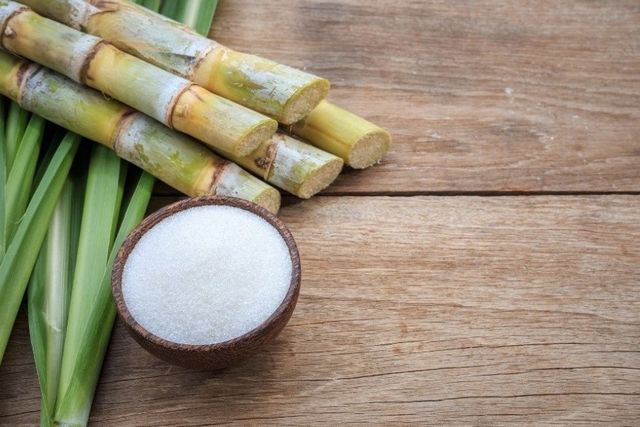Cane Sugar Processing Explained: What Happens Inside a Sugar Mill
Wiki Article
A Comprehensive Guide to the Environmental Impact and Sustainability Practices in Cane Sugar Processing
The environmental impact of cane sugar processing presents a complex range of challenges that warrant mindful assessment. From dirt deterioration and extreme water usage to the carbon footprint associated with growing and production, the consequences of conventional practices are far-reaching. What details techniques can be applied to strike an equilibrium in between performance and ecological stewardship?Introduction of Walking Stick Sugar Processing
Cane sugar handling entails a collection of methodical steps that change sugarcane right into refined sugar. Initially, collected sugarcane is transported to refining facilities, where it undertakes cleansing to eliminate dirt and particles. Following this, the cane is squashed to draw out juice, which is after that clarified by removing contaminations with home heating and the enhancement of lime.The cleared up juice undertakes evaporation, where water is gotten rid of to focus the sugar content. These crystals are divided from the continuing to be syrup utilizing centrifugation, resulting in raw sugar.
The final product is after that dried and packaged for distribution. Throughout this whole procedure, maintaining effectiveness and top quality control is essential to make sure the sugar fulfills industry criteria. Each step in walking cane sugar handling not just adds to the end product however additionally has ramifications for source usage and waste generation, establishing the stage for discussions on sustainability and environmental effects linked with sugar manufacturing.
Environmental Difficulties of Production
The manufacturing of walking cane sugar offers numerous significant environmental challenges that warrant attention. One key concern is the comprehensive use agrochemicals, including pesticides and fertilizers, which can cause dirt degradation, biodiversity loss, and contamination of local water sources. The runoff from sugarcane fields commonly brings these chemicals right into close-by environments, interfering with marine life and influencing the wellness of areas reliant on these water bodies.An additional difficulty is the high energy consumption connected with sugarcane handling. The boiling and refining phases need considerable heat, mainly produced by burning fossil gas, adding to greenhouse gas emissions. In addition, the extensive land area required for sugarcane farming can cause deforestation and environment destruction, further aggravating climate change and harmful wildlife.
Moreover, the labor techniques in some regions raise ethical concerns, as employees may encounter bad working problems and insufficient wages. This scenario often bolsters a cycle of hardship in neighborhood neighborhoods. Cane Sugar Processing. Addressing these environmental challenges is critical for establishing more lasting methods in walking stick sugar manufacturing, ultimately profiting both the setting and the communities associated with this sector
Water and Land Usage Impact
Water resources and land use are vital components in the walking cane sugar industry that significantly influence the atmosphere. The farming of sugarcane requires considerable water input, with price quotes suggesting that it can consume as much as 2,000 litres of water per kilogram of sugar generated. This extensive use of water commonly results in exhaustion of neighborhood water sources, affecting not only the sugarcane ranches however additionally bordering communities and communities that depend on the exact same water resources for farming go to this web-site and residential usage.
Additionally, land use for sugarcane farming can bring about logging and the conversion of all-natural environments right into monoculture plantations. This practice diminishes biodiversity, disrupts neighborhood communities, and contributes to soil degradation. The expansion of sugarcane fields frequently intrudes on useful agricultural land, producing competitors for sources in between food and biofuel production.
Sustainable practices, such as maximizing watering methods and carrying out crop rotation, are important to minimize these influences. By embracing a lot more efficient water usage and land monitoring methods, the walking stick sugar sector can lower its environmental footprint, guaranteeing a balance in between agricultural productivity and ecological preservation.
Greenhouse Gas Emissions
Greenhouse gas exhausts represent a substantial environmental worry within the walking stick sugar processing sector, especially as agricultural techniques increase to fulfill international demand. The farming of sugarcane, a crop that flourishes in exotic climates, depends heavily on artificial plant foods and pesticides, which add to nitrous oxide discharges. Additionally, land-use modifications, including deforestation for brand-new sugarcane haciendas, launch co2 kept find more information in vegetation and soil.During processing, energy usage is one more major source of greenhouse gas discharges - Cane Sugar Processing. Many sugar mills make use of fossil fuels to power machinery and produce warmth, resulting in significant carbon impacts. Furthermore, the transport of raw sugarcane and ended up items adds layers of discharges with fuel burning in vehicles
This includes examining present agricultural methods, processing approaches, and transportation systems to recognize locations for improvement and reduction. Attending to greenhouse gas emissions is necessary for fostering an extra sustainable walking cane sugar market in a transforming climate.

Sustainable Practices and Innovations
Lasting methods and technologies are progressively essential in the walking stick sugar handling market as stakeholders look for to reduce ecological influences while maintaining performance. One considerable innovation is the implementation of incorporated plant management, which enhances source use by integrating dirt monitoring, pest control, and crop turning strategies. This technique boosts yield while reducing chemical inputs and protecting dirt wellness.Furthermore, the fostering of renewable energy resources, such as biomass from sugarcane deposits, has actually gained grip - Cane Sugar Processing. By converting waste products into energy, refining centers can lower their reliance on fossil fuels, thus reducing greenhouse gas click this exhausts
Water administration methods have actually also seen enhancements through the recycling and reusing of water in processing plants, significantly decreasing freshwater usage. Developments in innovation, such as precision agriculture, enable farmers to keep track of plant wellness and source usage much more successfully, making sure sustainable cultivation practices.
Furthermore, certification programs like Fair Profession and Rain forest Partnership urge eco liable farming methods and promote social equity within the supply chain. By embracing these lasting techniques and advancements, the walking stick sugar processing sector can improve its durability and contribute favorably to ecological stewardship.
Final Thought
The environmental influence of walking cane sugar processing offers considerable difficulties, consisting of dirt degradation, high water intake, and greenhouse gas discharges, alongside moral issues associated with labor methods. Dealing with these problems through sustainable methods, such as incorporated crop monitoring, renewable power fostering, and water recycling, is essential. By promoting socially fair and ecologically responsible techniques in sugar production, the sector can reduce its unfavorable results, making sure an extra sustainable future for both communities and environments associated with this industry.Walking cane sugar handling involves a series of organized actions that transform sugarcane into polished sugar. Each action in cane sugar processing not only adds to the last item but likewise has implications for source usage and waste generation, establishing the stage for discussions on sustainability and environmental effects linked with sugar manufacturing.
Greenhouse gas emissions represent a considerable ecological problem within the cane sugar processing industry, specifically as agricultural practices expand to satisfy worldwide demand.Lasting methods and technologies are increasingly important in the walking stick sugar processing sector as stakeholders look for to lower ecological influences while keeping performance.The ecological effect of walking stick sugar processing presents significant challenges, consisting of dirt degradation, high water consumption, and greenhouse gas emissions, alongside ethical concerns connected to labor techniques.
Report this wiki page